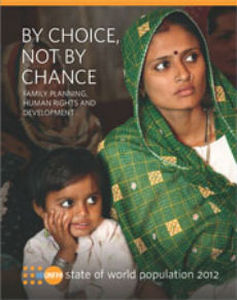 Alistair Wardrope, Healthy Planet Sheffield Originally posted here Would anyone dispute that healthcare systems ought to put their patients first? The mantra has a near-unassailable status in discussions of the best foundations for healthcare. The UK’s General Medical Council makes it first amongst the Duties of a Doctor; it provides the title of the Department of Health’s response to the findings of the Francis Report; and it lies (in its more-theorised form, ‘patient-centred care’) at the core of Don Berwick’s recent report into safety in the NHS. No politician, of any political stripe, would see fit to enter into a debate on health without it taking pride of place in their rhetoric. I’ve used it myself, campaigning for the priority of “patients before profits”. Nonetheless, I’ve long had qualms about it. It took a work of fantasy to figure out exactly why. During a recent and all-too-brief summer break, I decided to read China Miéville’s Perdido Street Station. I had harboured the vague intent of doing so for several years, but a fortuitous alignment of stars and an inability to access the books I was supposed to read in the university library meant I finally did. As a (somewhat lapsed) devotee of speculative fiction, I’d always expected to find more than simple escapism between its covers; however, I did not expect it to form the nucleus around which those nagging worries about patient-centred care would crystallise. The passage that set me thinking is little more than an aside, one of the short conversational detours the novel is littered with. It concerns a society of nomadic bird-people, the Garuda of Cymek. Garuda society is founded on the moral and political primacy of individual freedom. Their legal code admits but one crime – depriving another Garuda of choice; their ethical code, only one vice – disrespect. So far, so Tea Party. But the Garuda take these principles in an altogether different direction. Their interpretation of individualism rests on a particular understanding of what the individual is: the ‘concrete’ individual. As Ged, the autodidact librarian-priest, states: You are an individual inasmuch as you exist in a social matrix of others who respect your individuality and your right to make choices. That’s concrete individuality: an individuality that recognizes that it owes its existence to a kind of communal respect on the part of all the other individualities, and that it had better therefore respect them similarly. With the individual understood in these terms, disrespect becomes at heart a crime of ‘abstraction’: isolating one’s own individuality from the network of social interactions by which it and other persons are constituted and so losing the symmetry between them in which equal status is grounded. The Garuda share their ‘concrete’ understanding of the individual with a strong line of philosophers and political theorists. In his influential essay ‘Atomism’, the communitarian thinker Charles Taylor describes the individual as existing only when grounded in a society that affords the material, psychological and social resources for them to develop into freely-choosing agents, and provides the range of options necessary to make such choices meaningful. Respect for such individuals, therefore, is inseparable from respect for the social conditions underpinning their individuality. This is in stark contrast to the ‘atomism’ of the title, a charge he levels against the libertarian individual, whose values and preferences are interpreted and realised independently of others, and the protection of whose choices sets the boundaries of an acceptable social contract. These ideas are developed upon in recent work in feminist philosophy on ‘relational’ conceptions of autonomy. Traditionally, medical ethics has employed a rather thin understanding of autonomy – interpreted in the doctrine of informed consent, for example, as little more than decision-making capacity. Relational theorists argue that this ignores the role played by our emotions and attitudes towards ourselves and others – and their attitudes towards us – in developing and maintaining our capacities for autonomy. Consider an individual who, after a lifetime of oppression, comes to adopt those oppressive values as his own; the individual who does not have the necessary self-respect to consider herself worthy to make her own; or the individual who, like Aesop’s fox rejecting the inaccessible grapes as sour, comes to view certain ways of living as undesirable only because they are not realistic options available to them. In each case, the individual may be in full possession of the faculties that constitute mental capacity, but faces more subtle, relational, threats to their autonomy. The concrete individualism of the Garuda – and the work of communitarian and relational theorists – captures my concerns about patient-centred care. For in many interpretations of the term, the idea of the patient upon whom care is being centred is what the Garuda would consider an abstract individual. When patient-centredness merely means enhancing patient choice, increasing medical consumerism or a way to promote marketisation of health services, we present the patient as the isolated, rational ‘chooser’ that is the subject of Taylor’s ‘atomism’ critique. More generally, an interpretation of patient-centred care focussed solely on the clinical encounter – where it concerns only the interactions between health professionals and the individuals who come to them at the point of clinical need – risks leaving out other individuals and important aspects of care. When care is centred on the patient, who or what falls into the periphery? It seems to me that many who fall into the margins of this picture are those who are already most marginalised. Most obviously entering into this group are those who need health care but are unable to access it: ‘patient-centred’ care, focused on the abstract patient, has nothing to say about caring for those who – through legal, economic, social or psychological barriers to access – are unable even to become patients. But, even setting aside the tremendous injustice and inequity – where the most vulnerable communities, such as vulnerable migrants, refugees and asylum seekers, poor and oppressed groups, are done further harm –ignoring these groups is a public health disaster. Perhaps this could be remedied by defining ‘patients’ according to their need for health care rather than their ability to access it; but this picture still sees those patients as abstract individuals, and so has little room for public and global health concerns that make no sense in individualistic terms. Infection control, mitigation of climate change and its health impacts, social and political action on the social determinants of health: all are relational public goods. They are not focussed toward, or done in aid of, any individual patient, and only make sense at a population level. In the current political climate in the UK – where attempts are being made to limit access to healthcare for migrants, and such care is increasingly conceived of as a service provided to individuals for individual benefit – the rhetorical use of patient-centredness emphasises only the abstract patient, with the attendant dangers to public health sketched above. But the good news is that, when the individual is understood in concrete terms, these dangers are not just brought back into the fold – they become a central component of patient-centred care. The reason why is simple: the health of the individual simply cannot be considered in isolation from that of the population. As Sir Muir Gray writes, “personalised and population medicine are interwoven like warp and woof.” A healthcare intervention is never solely for a single, isolated patient; it is simultaneously a public health measure. So when the International Association of Patient Organisations puts patient involvement in social policy, universal access to health care, and attention to education, employment and family issues at the core of its definition of patient-centred care, it is not adding these in as an additional ingredient to aiding execution of the interests and desires of individual patients in the clinical setting. Rather, it acknowledges the former as a core component of the latter. And protecting and extending access to healthcare for migrants – economic, asylum seeker or undocumented – is not a good to be weighed against the health needs of a nation’s citizens, but an integral part of serving those needs. In meeting the challenges of shaping more environmentally sustainable health systems – able to meet the needs of people today without sacrificing those of future generations – we need not marginalise or ignore current patient’s interests; as elsewhere in healthcare improvement, “the greatest untapped resource in healthcare is the patient.” Such work on sustainable healthcare – the focus of this September’s CleanMed Europe conference in Oxford – is a re-interpretation of what patient-centred care could be, modelled on a more comprehensive understanding of what it means to be a patient. It turns out, then, that my concern is not primarily with putting patients first, or with patient-centred care – at least, not with what those ideals could and should mean. The problems arise only when the individual is considered in isolation from their social and political context and the environment around them. Given the fundamentally relational nature of health and disease, this isolation is intellectually and ethically untenable; patient-centred care makes sense only when we listen to the lesson I was taught by a fictional society – to view patients (ourselves included) as concrete, inherently social, individuals.
0 Comments
 Land degradation (source: UN/John Isaac) Land degradation (source: UN/John Isaac) Dalvir Kular With conservative estimates forecasting a population of around 9 billion people by 2050, the question of whether the world food system’s production capacity can keep up with increasing demand is a very important one. How it can do so in a world increasingly influenced by climate change is an even tougher question. Imagine if 2013 were the year where we started to take real action on climate change. The year where we changed our course to end malnutrition, for good. I choose to be optimistic. In the global north we have warped our basic need for food into a multi-billion pound industry in which it’s not so much about nutrition but luxury…at least as long as you have the money. In the global south, the losers of our success are driven further into poverty, due to injustices in the political decisions of the global north. The lack of regulation, commodity speculation, inequitable trade policies and climate change combined are helping to send food prices through the roof for the poor. The recent launch of the ‘Enough Food For Everyone IF‘ campaign hammered home the truth that for now, there is enough food available to feed everyone on Earth, but the real problem is how to ensure that people have sufficient access to ensure their food security. Unsustainable energy use and agriculture are fueling a warmer climate, which is resulting in unpredictable and increasingly frequent natural disasters such as floods and droughts. The problems described above – and the increasing shadow of climate change – are directly and indirectly impacting on access to food for the world’s poor; and climate science tells us there’s more to come. Safety nets and speculation According to the United Nations global food reserves are at their lowest levels in nearly 40 years, meaning that there’s a much smaller margin for those already food insecure. If the cost of staples goes up 170%, people either increase their expenditure for the same amount of food, you change your diet to a cheaper and often less nutritious one or you eat less. If you’re poor, ie. when the food required to be secure represents a reasonable proportion of your income, the first option may not be open to you, and there is much less scope to adapt. Rapid urbanisation in the developing world creates the opportunity of greater inequality of livelihoods and income in a higher population density. This give rise to possible future food security issues and a need for safety nets to help city dwellers cope when food prices may be volatile in the future. Helping farmers to adapt to the impacts of climate change can defend food supplies. Laws to prevent speculation have been largely opposed by the big players. Barclays is the biggest UK operator in food commodity markets, making up to an estimated £500m from speculating on food prices in 2010 and 2011. Legislation to limit commodity speculation was backed by the EU in early 2013. Germany’s fourth largest bank, DZ Bank, has announced it would no longer speculate on food prices. Agriculture – especially large-scale, intensive farming of livestock – contributes heavily to greenhouse gas (GHG) emissions, which in turn are a big part of the reason why we’ve been seeing crop failures all around the world, from Africa to the USA to Russia. Agriculture needs to be part of the solution – and with an increase in investment and better policies, sustainable agriculture technologies and practices may be adopted to improve food security and sovereignty for farmers and consumers in the global South, and to reduce emissions and preserve biodiversity. The recent extremely successful UK-based Fish Fight campaign, spearheaded by the food writer Hugh Fearnley-Whittingstall, is proof that people power – assisted by the internet and social media – can bring real change. It coordinated its supporters to send emails to MEPs in all the official languages of the EU, with more than 120,000 sent within 24 hours in a, successful, effort to ban fish discards. We need similar political momentum to set a more ambitious 40% emissions reduction target for Europe. The Common Agricultural Policy (CAP), which receives nearly 40% of the EU budget must be reformed along the lines advocated by the ‘Enough food for everyone IF’ campaign. It suggests stopping food from becoming fuel for cars, a false economy when it comes to tackling climate change. Certainly we in Europe should pressure our MEPs to lobby for sustainable agriculture in the context of the CAP reform being carried out this year. The idea of a low GHG diet – more domestic, home grown foods, seasonal, local, and including less red meat and dairy – is far from new, but it’s one of the ways that people can make the biggest difference to their carbon footprint. The really good news is that it isn’t only more sustainable, but also often healthier too. 21/11/2012 A Week before COP18's gender day: why meeting the unmet family planning need is key for human rights, gender equality - and tackling climate changeRead Now The State of World Population Report 2012 Credit: UNFPA The State of World Population Report 2012 Credit: UNFPA The most important point made in the recent UNFPA report, The State of World Population 2012 - perhaps even its foundation - is that access to family planning is a human right. If it can be realised globally, this will be a big step not only in terms of environmental sustainability but also and more importantly, reducing poverty, exclusion, poor health and gender inequality. It is a travesty and an abuse of human rights that there are currently 222 million women without access to family planning who want it, largely for lack of a few billion dollars per year - about a tenth of the tobacco industry's annual profits. According to the UNFPA's Press Release which accompanied the report's release, making voluntary family planning available to everyone in developing countries would reduce costs for maternal and newborn health care by US$11.3 billion annually, as well as helping to stabilise the global population more quickly. In the longer term this would contribute reducing climate change (although this is not at all to imply that consumption is not at least as or probably much more important) and problems of resource scarcity. In addition to finance, to ensure that every person’s right to family planning is realised, the report also calls on governments and leaders to:
Family planning delivers immeasurable rewards to women, families, and communities by enabling healthier, longer lives. If an additional 120 million obtained access to family planning - just over half of those who currently don't have access and want it - the report estimates 3 million fewer babies would die in their first year of life. The State of World Population 2012 says that governments, civil society, health providers and communities have the responsibility to protect the right to family planning for women across the spectrum, including those who are young or unmarried. But financial resources for family planning have declined globally and contraceptive use has remained mostly steady. In 2010, donor countries fell US$ 500 million short of their expected contribution to sexual and reproductive health services in developing countries. Contraceptive use prevalence has increased globally by just 0.1 per cent per year over the last few years. Signs of progress In July, at the London Summit on Family Planning, donor countries and foundations together pledged US$2.6 billion to make family planning available to 120 million women in developing countries with unmet needs by 2020. Developing countries themselves also pledged to increase support. But, according to the report, an additional US$ 4.1 billion is necessary each year to meet the unmet need for family planning of all 222 million women who would use family planning but currently lack access to it. This investment would save lives by preventing unintended pregnancies and unsafe abortions. |
Details
Archives
February 2019
Tags
All
|
 RSS Feed
RSS Feed
